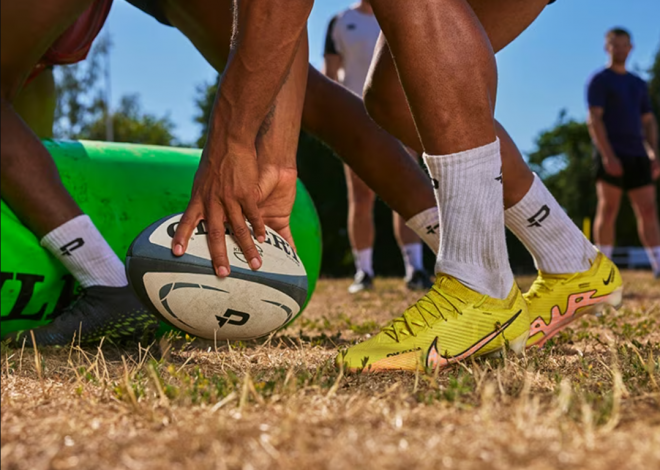
Setting Up the Perfect Basketball Court: Hoops, Backboards, and More
Basketball is more than just a sport; it’s a way of life for many enthusiasts. The joy of dribbling the ball, sinking that perfect shot, and competing with friends and family can be an incredibly satisfying experience. To elevate this experience, it is crucial to have a basketball court that is not only functional but also optimized for maximum enjoyment. In this article, we will explore the key aspects of setting up the perfect basketball court, from choosing the right location to accessorizing it with the best equipment.
1. Choosing the Right Location
Before diving into the nitty-gritty of court construction, it’s essential to select the perfect location. Consider the available space on your property, ensuring enough room for the court without compromising other structures or activities. Additionally, accessibility and safety should be taken into account, ensuring that the court is easily reachable and away from potential hazards.
2. Regulation Size and Dimensions
A regulation-size basketball court follows specific measurements to provide a professional playing experience. Typically, a standard court is 94 feet long and 50 feet wide, with specific markings for the three-point line, free-throw line, and key area. Adhering to these dimensions ensures fair play and enhances the authenticity of the game.
3. Selecting the Hoop
The basketball hoop is the heart of any court. When choosing a hoop, consider options like fixed or adjustable heights, different rim types, and durability. An adjustable hoop is ideal for households with players of varying ages, allowing everyone to enjoy the game comfortably.
4. Backboard Materials and Options
The backboard material significantly impacts the gameplay and rebound quality. Common materials include acrylic, tempered glass, and polycarbonate. Tempered glass offers the best rebound, while acrylic is more affordable. Understanding the pros and cons of each material can help in making an informed decision.
5. Understanding Court Surfaces
The court surface plays a vital role in player safety and performance. Concrete, asphalt, and sport tiles are popular choices. Concrete is durable but may not provide adequate shock absorption, while sport tiles offer better shock absorption and are gentle on players’ joints. Consider the weather and maintenance requirements when choosing the right surface.
6. Installing Lighting for Night Games
For those enthusiastic about night games, proper lighting is essential. Adequate illumination ensures the game can continue safely even after the sun sets. Install LED or floodlights strategically to avoid shadows and ensure clear visibility on the court.
7. Fencing and Boundary Markings
Adding a fence around the court not only adds a professional touch but also keeps balls from rolling away. Boundary markings, such as painted lines, improve the court’s aesthetics and provide clear indications of in-bounds and out-of-bounds areas.
8. Accessorizing the Court
To enhance the overall experience, consider adding accessories like ball racks, benches, and scoreboards. Ball racks keep the playing area organized, benches offer resting spots during breaks, and scoreboards add a competitive element to the games.
9. Maintaining the Court
Regular maintenance is essential to keep the court in top condition. Cleaning the surface, repainting the lines, and checking for damages are vital for safety and longevity. A well-maintained court also reflects the owner’s dedication to the game.
10. Incorporating Landscaping
Landscaping around the court can add beauty and tranquility to the playing area. Planting trees or creating flower beds around the court provides a pleasant ambiance for players and spectators alike.
11. Ensuring Safety and Security
Safety should always be a top priority when setting up a basketball court. Installing padding or safety nets around poles and backboards can help prevent injuries during aggressive play. Additionally, ensuring the court is secure from unauthorized access and vandalism is crucial.
12. Customization and Personalization
Make the court uniquely yours by adding personal touches. Consider painting your favorite team’s logo on the surface, or include your family’s name in the design. Customization adds a sense of pride and ownership to the court.
13. Budget Considerations
Creating the perfect basketball court doesn’t have to break the bank. Set a budget and prioritize essential elements, such as a high-quality hoop and a safe surface. There are cost-effective options available for various components, allowing you to strike a balance between quality and budget.
14. Conclusion
A well-designed and thoughtfully set up basketball court can significantly enhance the overall playing experience. From choosing the right location to investing in quality equipment, each aspect plays a crucial role in creating the perfect court. Remember to prioritize safety, maintain the court regularly, and add personal touches to make it a space where unforgettable memories are created.

FAQs:
Q1: How much space do I need to set up a basketball court in my backyard? A1: The recommended space for a half-court setup is approximately 30 feet by 50 feet, while a full regulation court requires 94 feet by 50 feet. Choose a size that suits your available space and preferences.
Q2: What is the best backboard material for a residential basketball court? A2: Tempered glass is the preferred choice for a residential court as it offers superior rebound quality similar to professional arenas.
Q3: Can I install a basketball hoop on an uneven surface? A3: While it’s not ideal, it is possible to install a hoop on a slightly uneven surface. However, for the best playing experience, it’s recommended to have a level court.
Q4: How do I maintain the court during the winter months? A4: During winter, remove snow and ice promptly using a shovel or snow blower. Avoid using harsh chemicals that could damage the court surface.
Q5: Are there any height restrictions for basketball hoops in residential areas? A5: Some neighborhoods or homeowner associations may have height restrictions for basketball hoops. Check with local authorities or community guidelines before installing a hoop.



